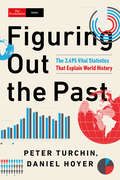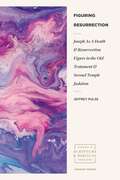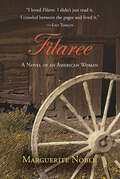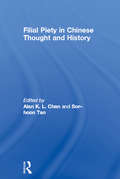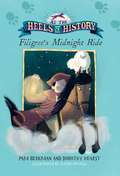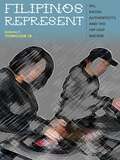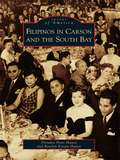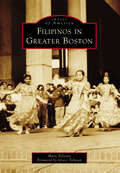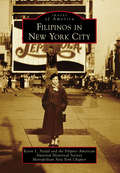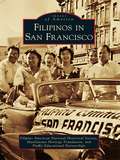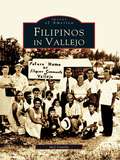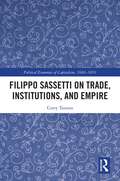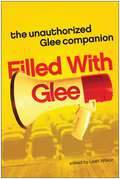- Table View
- List View
Figurines in Hellenistic Babylonia: Miniaturization and Cultural Hybridity
by Stephanie M. Langin-HooperIn this volume, Stephanie M. Langin-Hooper investigates the impact of Greek art on the miniature figure sculptures produced in Babylonia after the conquests of Alexander the Great. Figurines in Hellenistic Babylonia were used as agents of social change, by visually expressing and negotiating cultural differences. The scaled-down quality of figurines encouraged both visual and tactile engagement, enabling them to effectively work as non-threatening instruments of cultural blending. Reconstructing the embodied experience of miniaturization in detailed case studies, Langin-Hooper illuminates the dynamic process of combining Greek and Babylonian sculpture forms, social customs, and viewing habits into new, hybrid works of art. Her innovative focus on figurines as instruments of both personal encounter and global cultural shifts has important implications for the study of tiny objects in art history, anthropology, classics, and other disciplines.
Figuring Faith and Female Power in the Art of Rubens (Visual and Material Culture, 1300-1700)
by J. Vanessa LyonFiguring Faith and Female Power in the Art of Rubens argues that the Baroque painter, propagandist, and diplomat, Peter Paul Rubens, was not only aware of rapidly shifting religious and cultural attitudes toward women, but actively engaged in shaping them. Today, Rubens's paintings continue to be used -- and abused -- to prescribe and proscribe certain forms of femininity. Repositioning some of the artist's best-known works within seventeenth-century Catholic theology and female court culture, this book provides a feminist corrective to a body of art historical scholarship in which studies of gender and religion are often mutually exclusive. Moving chronologically through Rubens's lengthy career, the author shows that, in relation to the powerful women in his life, Rubens figured the female form as a transhistorical carrier of meaning whose devotional and rhetorical efficacy was heightened rather than diminished by notions of female difference and particularity.
Figuring Korean Futures: Children’s Literature in Modern Korea
by Dafna ZurThis book is the story of the emergence and development of writing for children in modern Korea. Starting in the 1920s, a narrator-adult voice began to speak directly to a child-reader. This child audience was perceived as unique because of a new concept: the child-heart, the perception that the child's body and mind were transparent and knowable, and that they rested on the threshold of culture. This privileged location enabled writers and illustrators, educators and psychologists, intellectual elite and laypersons to envision the child as a powerful antidote to the present and as an uplifting metaphor of colonial Korea's future. Reading children's periodicals against the political, educational, and psychological discourses of their time, Dafna Zur argues that the figure of the child was particularly favorable to the project of modernity and nation-building, as well as to the colonial and postcolonial projects of socialization and nationalization. She demonstrates the ways in which Korean children's literature builds on a trajectory that begins with the child as an organic part of nature, and ends, in the post-colonial era, with the child as the primary agent of control of nature. Figuring Korean Futures reveals the complex ways in which the figure of the child became a driving force of nostalgia that stood in for future aspirations for the individual, family, class, and nation.
Figuring Out the Past: The 3,495 Vital Statistics that Explain World History
by Peter Turchin Daniel HoyerWhat was history's biggest empire? Or the tallest building of the ancient world? What was the plumbing like in medieval Byzantium? The average wage in the Mughal Empire? Where did scientific writing first emerge? What was the bloodiest ever ritual human sacrifice?We are used to thinking about history in terms of stories. Yet we understand our own world through data: cast arrays of statistics that reveal the workings of our societies. In Figuring Out the Past, radical historians Peter Turchin and Dan Hoyer dive into the numbers that reveal the true shape of the past, drawing on their own Seshat project, a staggeringly ambitious attempt to log every data point that can be gathered for every society that has ever existed. This book does more than tell the story of humanity: it shows you the big picture, by the numbers.
Figuring Out the Tax Congress: Treasury, and the Design of the Early Modern Income Tax (Cambridge Tax Law Series)
by Lawrence ZelenakFiguring Out the Tax recounts the forgotten early development of the federal income tax in the US, resulting from the interplay between Congress and the Treasury Department in the decades following the enactment of the tax in 1913. It covers a wide range of topics including the income tax treatments of marriage, capital losses, charitable contributions and homeownership, as well as the rise, demise and resurrection of income tax withholding. Lawrence Zelenak deftly illustrates how the income tax achieved its current form through a range of stories which are new to tax history scholarship and involve some remarkable personalities and surprising plot twists. Although of particular interest to tax academics and professionals, this book will also serve as a useful introduction to the development of income tax for undergraduate students and law students. Recounts important developments in the early history of the income tax utilising new material which is not covered in existing tax history scholarship. Adopts a chronological narrative approach, making for an entertaining read. Does not assume any particular background in income tax law and will be accessible to a general readership with an interest in income tax.
Figuring Resurrection: Joseph as a Death and Resurrection Figure in the Old Testament and Second Temple Judaism (Studies in Scripture and Biblical Theology)
by Jeffrey PulseThe death and resurrection of Joseph Towards the end of Genesis, the narrative slows down to tell the story of Joseph. There is no dispute that Joseph's story is unique, but why does it deserve such focused attention? And how does this story relate to the rest of Genesis? In Figuring Resurrection, Jeffrey Pulse presents the view that Joseph is a death-and-resurrection- figure. A close literary reading of Genesis 37–50 reveals that Joseph's story is one of rejection and restoration, descent and ascent, condemnation and exaltation, exile and return, death and resurrection. Far from a lengthy diversion, Joseph's story of "death and resurrection" plays an important role in the theology of Genesis and later Second Temple Jewish literature. Figuring Resurrection has implications for our understanding of Joseph's narrative, the book of Genesis, Hebrew thinking on the afterlife, and typology.
Figuring: Fortune Favours The Fast
by Maria PopovaFiguring explores the complexities of love and the human search for truth and meaning through the interconnected lives of several historical figures across four centuries—beginning with the astronomer Johannes Kepler, who discovered the laws of planetary motion, and ending with the marine biologist and author Rachel Carson, who catalyzed the environmental movement. <P><P>Stretching between these figures is a cast of artists, writers, and scientists—mostly women, mostly queer—whose public contribution have risen out of their unclassifiable and often heartbreaking private relationships to change the way we understand, experience, and appreciate the universe. Among them are the astronomer Maria Mitchell, who paved the way for women in science; the sculptor Harriet Hosmer, who did the same in art; the journalist and literary critic Margaret Fuller, who sparked the feminist movement; and the poet Emily Dickinson. <P><P>Emanating from these lives are larger questions about the measure of a good life and what it means to leave a lasting mark of betterment on an imperfect world: Are achievement and acclaim enough for happiness? Is genius? Is love? <P><P>Weaving through the narrative is a set of peripheral figures—Ralph Waldo Emerson, Charles Darwin, Elizabeth Barrett Browning, Herman Melville, Frederick Douglass, Nathaniel Hawthorne, and Walt Whitman—and a tapestry of themes spanning music, feminism, the history of science, the rise and decline of religion, and how the intersection of astronomy, poetry, and Transcendentalist philosophy fomented the environmental movement. <P><b>A New York Times Bestseller</b>
Fiji My Island Home: Country village life including Sugar Cane Farmers - Fiji
by Dr Kamlesh SharmaFiji: my island home provides an extraordinary insight in the daily livelihood of the poor sugar cane farmers in Fiji. The book discloses the struggles, survival and contributions to the local economy by farmers who toil on small pieces of land ranging in sizes of three to five acres each. These are leased from the Indigenous owners for a fixed term with no provision for further extension. The public bus services in Fiji are vividly narrated to capture the true essence of the word 'Fiji Time'. The book tries to build bridges of remembrance, understanding and reconciliation amongst Fijians of diverse cultural backgrounds. Finally, the book very clearly articulates and communicates the message that no matter where a Fijian is located in the world, one can never part from the fond memories of the island home!
Filaree: A Novel of an American Woman
by Marguerite NobleThis moving novel of pioneer life in Arizona has become a classic. Based on the life of the author's mother, it overturns every stereotype of western womanhood. Comes closer to the truth and the validity of the so-called winning of the West than anything I have ever read. It is terrifying, heartbreaking and remarkable. . . . Filaree is also one of the most magnificent portraits of a woman that exists in our literature.--Howard Fast I loved Filaree, I didn't just read it, I crawled between the pages and lived it.--Lily TomlinAn extraordinary performance. . . . a powerful antidote to the romantic illusions some people have about ranch people and life on the range. . . . As a writer, Mrs. Noble makes no compromises. She tells her story in plain country American dialect, offers no exaggerated sex or violence, no vulgar talk. She is a realist in the best sense, a breath of fresh air in these free-wheeling times.--C. L. Sonnichsen
Filial Piety in Chinese Thought and History
by Sor-Hoon Tan Alan ChanThe phenomenon of filial piety is fundamental to our understanding of Chinese culture, and this excellent collection of essays explores its role in various areas of life throughout history. Often regarded as the key to preserving Chinese tradition and identity, its potentially vast impact on government and the development of Chinese culture makes it extremely relevant, and although invariably virtuous in its promotion of social cohesion, its ideas are often controversial. A broad range of topics are discussed chronologically including Confucianism, Buddhism and Daoism, making it essential reading for those studying Chinese culture, religion and philosophy. This is a multi-disciplinary survey that combines historical studies with philosophical analysis from an international team of respected contributors.
Filigree's Midnight Ride (At the Heels of History)
by Dorothy Hearst Pam BerkmanJoin Filigree, a five-pound Pomeranian, as he stows away on Paul Revere’s midnight ride in this first book of the At the Heels of History series, inspired by important events and told through the eyes, ears, and noses of dogs.Filigree may be a small puff of a Pomeranian but he has a big, brave heart. As the Revere family dog, he’s ready to do his part to help the American colonists stand up to the British soldiers. But the other dogs, like Jove, Sam Adams’s Newfoundland, and even the Revere cat, Anvil, think Filigree is a joke. The Reveres’ daughter Frances is the only one who believes in him. When Frances’s father, Paul Revere, leaves home on a secret mission, Filigree and Frances know they have to help, no matter how dangerous it might be. Will a pint-sized pup just be in the way, or can Filigree prove that even a very small dog can fight for freedom?
Filipino Martial Culture
by Mark V. WileyA classic reference for martial artists and aficionados of Filipino culture, Filipino Martial Culture is an unprecedented excursion into the history, ideology, and techniques of Filipino martial arts. Beginning with a comprehensive study of the history of civil turbulence in the Philippines and the participation of its warriors in fights for independence from colonial rulers, Filipino Martial Culture proceeds to explore the worldview, spirituality, folklore and weaponry of this ancient tradition.Mark Wiley has collected extensive interviews with Filipino martial arts masters, as well as photographs of their practice and weaponry, in his preparations for this book. He explains basic and rare techniques, elucidating the ethos of much of Filipino culture in the process. The authority and depth of his materials are unsurpassed; Filipino Martial Culture is as much a definitive anthropological textbook as it is a practical guide to the martial arts
Filipino Martial Culture
by Mark V. WileyA classic reference for martial artists and aficionados of Filipino culture, Filipino Martial Culture is an unprecedented excursion into the history, ideology, and techniques of Filipino martial arts. Beginning with a comprehensive study of the history of civil turbulence in the Philippines and the participation of its warriors in fights for independence from colonial rulers, Filipino Martial Culture proceeds to explore the worldview, spirituality, folklore and weaponry of this ancient tradition.Mark Wiley has collected extensive interviews with Filipino martial arts masters, as well as photographs of their practice and weaponry, in his preparations for this book. He explains basic and rare techniques, elucidating the ethos of much of Filipino culture in the process. The authority and depth of his materials are unsurpassed; Filipino Martial Culture is as much a definitive anthropological textbook as it is a practical guide to the martial arts
Filipino Martial Culture
by Mark V. WileyWidely practiced but not always understood, the Filipino martial arts have a rich history and distinctive character that until now have not fully been documented. Written in the context of Philippine history and culture, Filipino Martial Culture uncovers the esoteric components of the Filipino martial arts and the life histories of the men who perpetuate them. Included are: the history of turbulence and war in the Philippines from prehistoric times to the present day; the culture of the Filipino martial arts, including warrior ethos and worldview, spirituality, folklore, and weaponry; biographical sketches of eighteen Filipino masters and descriptions of their respective fighting styles; and a comparative study of the ethos, ideology, and development of the Filipino martial arts in relation to the considerable martial traditions of India, China, and Japan.In the course of his research, internationally renowned martial arts master and scholar Mark V. Wiley traveled the globe, interviewing top masters and recording their life histories, thoughts, and anecdotes. In addition, he collected 320 historical photographs and illustrations, including step-by-step sequences of the masters demonstrating the distinctive techniques of their particular martial styles. Filipino Martial Culture is a classic reference for practitioners and researchers alike!
Filipinos Represent: DJs, Racial Authenticity, and the Hip-hop Nation
by Antonio T. Tiongson Jr.The &“Hip-hop Nation&” has been scouted, staked out, and settled by journalists and scholars alike. Antonio T. Tiongson Jr. steps into this well-mapped territory with questions aimed at interrogating how nation is conceptualized within the context of hip-hop. What happens, Tiongson asks, to notions of authenticity based on hip-hop&’s apparent blackness when Filipino youth make hip-hop their own? Tiongson draws on interviews with Bay Area–based Filipino American DJs to explore the authenticating strategies they rely on to carve out a niche within DJ culture. He shows how Filipino American youth involvement in DJing reconfigures the normal boundaries of Filipinoness predicated on nostalgia and cultural links with an idealized homeland. Filipinos Represent makes the case that while the engagement of Filipino youth with DJ culture speaks to the broadening racial scope of hip-hop—and of what it means to be Filipino—such involvement is also problematic in that it upholds deracialized accounts of hip-hop and renders difference benign. Looking at the ways in which Filipino DJs legitimize their place in an expressive form historically associated with African Americans, Tiongson examines what these complex forms of identification reveal about the contours and trajectory of contemporary U.S. racial formations and discourses in the post–civil rights era.
Filipinos in Carson and the South Bay (Images of America)
by Florante Peter Ibanez Roselyn Estepa IbanezOne of Carson's most distinct features is its diversity. The city is roughly one-quarter each Hispanic, African American, white, and Asian/ Pacific Islander. This last group's vast majority are Filipinos who settled as early as the 1920s as farmworkers, U.S. military recruits, entrepreneurs, medical professionals, and other laborers, filling the economic needs of the Los Angeles region. This vibrant community hosts fiestas like the Festival of Philippine Arts and Culture and has produced local community heroes, including "Uncle Roy" Morales and "Auntie Helen" Summers Brown. Filipino students of the 1970s organized to gain college admissions, establish ethnic studies, and foster civic leadership, while Filipino businesses have flourished in Carson, San Pedro, Wilmington, Long Beach, and the surrounding communities. Carson is recognized nationally as a Filipino American destination for families and businesses, very much connected to the island homeland.
Filipinos in Greater Boston (Images of America)
by Mary TalusanAs early as the Civil War, a dozen Filipino men living in Massachusetts enlisted in the Union army. In the 1900s, Filipino pensionados studied at Harvard, the Massachusetts Institute of Technology, and other colleges. After the Immigration and Nationality Act of 1965, Filipino medical, military, and other professionals settled in and around Greater Boston in Cambridge, Lexington, Malden, and Quincy. To support their communities, Filipino immigrants founded civic organizations such as the Philippine Medical Association of New England, Pilipino-American Association of New England, and Philippine Nurses Association of New England. Since 1976, parents have been volunteering at Iskwelahang Pilipino (Filipino school) to encourage their American-born children's pride for Filipino traditions. Included are never before seen photographs of the Aquino family during their time in exile. This book highlights the rich histories of Filipinos in Greater Boston and aims to inspire more works that document our immigrant community that has grown in the early 21st century to over 25,000 people.
Filipinos in New York City
by Kevin L. Nadal Filipino-American National Historical SocietyAfter the Spanish-American War in 1898, many Filipinos immigrated to New York City, mostly as students, enrolling at local institutions like Columbia University and New York University. Some arrived via Ellis Island as early as 1915, while Filipino military servicemen and Navy seafarers settled in New York after both World Wars I and II. After the Asian Immigration Act of 1965, many Filipinos came as professionals (e.g., nurses, physicians, and engineers) and formed settlements in various ethnic enclaves throughout the five boroughs of New York. Over the years, Filipinos have contributed significantly to New York arts and culture through Broadway theater, fashion, music, film, comedy, hip-hop, poetry, and dance. Filipino New Yorkers have also been successful entrepreneurs, corporate executives, community leaders, and politicians, and some, sadly, were victims of the 9/11 World Trade Center attacks.
Filipinos in San Francisco (Images of America)
by Pin@y Educational Partnerships Filipino American National Historical Society Manilatown Heritage FoundationTens of thousands of Filipinos who have lived, worked, and raised families for over five generations in this unique city stake their rightful claim to more than a century of shared history in San Francisco. The photographs herein attest to the early arrivals, who came as merchant mariners, businesspeople, scholars, and musicians, as well as agricultural and domestic workers. But their story has often been ignored, told incompletely by others, and edited too selectively by many. The Filipino American experience both epitomizes and defies the traditional immigrant storyline, and these pictures honestly and respectfully document the fruits of their labors, the products of their perseverance, and, at times, their resistance to social exclusion and economic suppression.
Filipinos in Vallejo (Images of America)
by Mel OrpillaFilipinos came to Vallejo as early as 1912, and some families here can count five generations back to their roots in the Philippines. Many came to Mare Island Naval Shipyard, where Filipinos found steady, well-paying jobs that spared them from menial work and stoop labor in the fields of California. With each major conflict of the 20th century, and finally with the relaxation of immigration quotas in 1965, waves of Filipino newcomers arrived on these shores. They advanced in their work at the shipyards, settled down, and started families, buying homes and establishing successful businesses. Now this active, politically empowered Filipino community numbers in the tens of thousands, yet traditional histories ignore its contribution to Vallejo's heritage.
Filipinos in Ventura County
by Elnora Kelly TayagFilipino immigrants came to Ventura County in the 1920s, beginning American lives mostly as farm laborers in work camps, notably the Arneill Ranch and Springville Ranch in Camarillo. They organized early societies like the Filipino Brotherhood Association of Ventura County, the Jordan Lodge 604 Legionarios del Trabajo, the Caballeros de Dimas Alang, the Filipino Optimist Club, and the Filipino Community of Ventura County. During World War II, Filipinos served in the 1st and 2nd Filipino Infantry Regiments of the U.S. Army. The omnipresence of the U.S. Navy in coastal Ventura prodded many second- and third-generation Filipinos to serve their country in Korea, Vietnam, Desert Storm, and the Persian Gulf. Today the same spirit of community engagement is illustrated in the 26 local Filipino organizations all under the umbrella of the Filipino American Council, which celebrates history, community, and culture.
Filipinos in the Willamette Valley
by Dolly Pangan-Specht Tyrone Lim Filipino American National Historical Society - Oregon ChapterTucked among the great pioneer destinations on the Oregon Trail is the fertile agricultural area of the Willamette Valley. Today the valley forms the cultural and political heart of Oregon and is home to three-quarters of the state's population. The beginning of the 20th century saw the entrance of Filipinos into the valley, arriving from vegetable farms in California and Washington, fish canneries in Alaska, and from the pineapple and sugar plantations in Hawaii. At the same time, the U.S. territorial government in the Philippines started sponsoring Filipino students, beginning in 1903, to study in the United States. Oregon's two biggest centers of education, today's University of Oregon in Eugene and Oregon State University in Corvallis, became home to Filipinos from the emerging independent Philippine nation. They were mostly male, the children of wealthy Filipinos who had connections. Most of them returned to the Philippines upon graduation; some stayed and created a new life in America.
Filippo Sassetti on Trade, Institutions and Empire (Political Economies of Capitalism, 1600-1850)
by Corey TazzaraThe Florentine traveler, merchant, and academician Filippo Sassetti was one of the premier economic thinkers of the late Renaissance. Well known for his ethnographic observations, Sassetti was also a commercial writer of the highest caliber—at once an original thinker and a remarkable witness to how Europeans even at the margins of empire were beginning to reconceptualize power and wealth. Unique among commercial theorists of the period, Sassetti offers a first-hand perspective on commerce in both the Mediterranean and the Indian Ocean. This volume translates (for the first time) the Discourse on Mediterranean Trade and a selection of the principal Indian Letters, with extensive historical notes. These are preceded by a lengthy essay positioning Sassetti as a figure in late Renaissance political economy. It makes the case that Sassetti was an early theorist of what might be termed the pragmatic tradition of free trade—in his case, a project linked to his analysis of commercial institutions in the Mediterranean and the Indian Ocean. Provoking an invaluable overview of trade in the Indian Ocean in the late sixteenth century, this volume is an excellent specialist text for postgraduate students and professional historians.
Filled with Fire and Light: Portraits and Legends from the Bible, Talmud, and Hasidic World
by Elie WieselHere are magnificent insights into the lives of biblical prophets and kings, talmudic sages, and Hasidic rabbis from the internationally acclaimed writer, Nobel laureate, and one of the world&’s most honored and beloved teachers. From a multitude of sources, Elie Wiesel culls facts, legends, and anecdotes to give us fascinating portraits of notable figures throughout Jewish history. Here is the prophet Elisha, wonder-worker and adviser to kings, whose compassion for those in need is matched only by his fiery temper. Here is the renowned scholar Rabbi Yohanan ben Zakkai, whose ingenuity in escaping from a besieged Jerusalem on the eve of its destruction by Roman legions in 70 CE laid the foundation for the rabbinic teachings and commentaries that revolutionized the practice and study of Judaism and have sustained the Jewish people for two thousand years of ongoing exile. And here is Rabbi Shneur Zalman of Liadi, founder of Chabad Hasidism, languishing in a Czarist prison in 1798, the victim of a false accusation, engaging in theological discussions with his jailers that would form the basis for Chabad&’s legendary method of engagement with the world at large. In recounting the life stories of these and other spiritual masters, in delving into the struggles of human beings trying to create meaningful lives touched with sparks of the divine, Wiesel challenges and inspires us all to find purpose and transcendence in our own lives.
Filled with Glee: The Unauthorized Glee Companion
by Leah WilsonIs Sue is the true driving force behind Glee? Who is the real alpha male in New Directions? Why do we really keep coming back to Glee week after week? From its quirky character insights to its inspirational, funny, and touching stories from fellow gleeks, Filled with Glee is the perfect companion for the fan who can't get enough Glee. Other standout sections include: A guide to putting together a glee club in your own school or community An index of Glee song and musical references, by episode Biographies of main and guest actors' musical theater backgrounds (and where and when they've worked together before)



